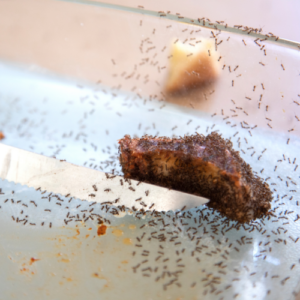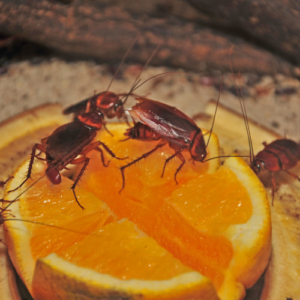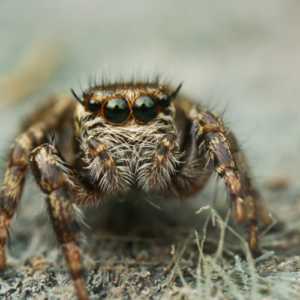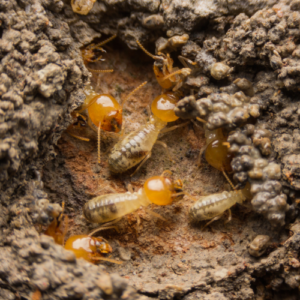
30 Aug Insights into South Florida’s Pests
Understanding Local Pests
Pests are an inevitable part of life in South Florida. With our warm climate and diverse ecosystems, it’s no wonder that various creepy crawlers make their home here. While these pests can be bothersome, understanding more about them can help in managing and even appreciating their role in our environment. Here’s a closer look at some common pests and what makes them intriguing.
Ants’ Impact on the Ecosystem
Ants are one of the most common pests found in South Florida, and their presence is more than just a minor annoyance. These industrious insects come in various species, each with unique behaviors and characteristics. The Argentine ant, for example, is known for its ability to form enormous colonies that can outcompete and displace native ant species. On the other hand, fire ants are infamous for their aggressive stings that can cause severe pain and allergic reactions. Despite their small size, ants play essential roles in the ecosystem. They help aerate the soil through their burrowing activities and act as natural pest controllers by preying on other insects. This role is crucial in maintaining a balanced environment and ensuring the health of various plant species.
Ant colonies are fascinating examples of natural engineering and organization. Each colony can house thousands of ants, all working together in a highly structured social system. The queen ant is responsible for reproduction, while worker ants perform tasks such as foraging for food, tending to the young, and maintaining the nest. Soldier ants are tasked with protecting the colony from potential threats. This division of labor allows the colony to function efficiently and adapt to various challenges. The complexity of ant colonies demonstrates an impressive level of teamwork and cooperation, which is vital for their survival and success.
Ants are not only important for their immediate environment but also for the broader ecosystem. They contribute to nutrient cycling by decomposing organic matter, which helps enrich the soil. Their burrowing activities can also enhance soil aeration, which benefits plant growth. In addition, ants play a role in seed dispersal by carrying seeds back to their nests, where they are sometimes discarded in nutrient-rich soil, aiding plant regeneration. This intricate interaction with their environment highlights the ecological significance of ants beyond their role as pests.
The Resilience of Cockroaches
Cockroaches are notorious for their resilience and adaptability, making them one of the most challenging pests to manage. These hardy insects can thrive in a variety of environments, from pristine homes to dirty sewers. The German cockroach, a common indoor pest, prefers warm, moist areas like kitchens and bathrooms where food and water are readily available. Their ability to survive without food for several weeks and their resistance to many conventional pest control methods highlight their adaptability. Cockroaches can even live for up to a week without their heads, thanks to their decentralized nervous system and small size.
Despite their impressive resilience, cockroaches can pose significant health risks. They are known carriers of allergens that can trigger asthma and allergic reactions, particularly in children and sensitive individuals. The allergens come from cockroach saliva, feces, and body parts, which can become airborne and contaminate indoor air. Additionally, cockroaches can spread pathogens and bacteria that may lead to gastrointestinal issues if they come into contact with food or surfaces. Effective management of cockroach populations is crucial for maintaining a healthy living environment and reducing potential health risks.
Controlling cockroach infestations requires a multifaceted approach. Sanitation is key; removing food and water sources can make an environment less attractive to cockroaches. Regular cleaning and proper food storage are essential in preventing infestations. Additionally, targeted treatments using baits, gels, and insecticides can help control and eliminate cockroach populations. Integrated pest management strategies that combine these methods with regular monitoring can be effective in maintaining control and preventing future infestations.
Spiders: Spooky Yet Beneficial
Spiders, while often feared for their appearance, play a crucial role in pest control. Many spider species are natural predators that help manage insect populations. For instance, orb-weaver spiders are known for their large, intricate webs, which capture a variety of flying insects, including mosquitoes and flies. By preying on these pests, spiders contribute to a balanced ecosystem and can reduce the need for chemical pest control methods. Their presence in gardens and homes can be beneficial, helping to keep other insect populations in check and supporting overall pest management efforts.
South Florida is home to a diverse range of spider species, each with unique characteristics and behaviors. While some spiders, like the brown recluse and black widow, can pose risks due to their venomous bites, most are harmless and even beneficial. The brown recluse is known for its potentially dangerous bite, which can cause skin necrosis, while the black widow is recognized by its shiny black body and red hourglass marking. However, many common spiders, such as the jumping spider and garden spider, are non-threatening and can be beneficial in controlling other pests. Understanding the different types of spiders in your area can help you identify which ones are helpful and which ones may require attention.
Living with spiders can be more manageable when you understand their role and behaviors. Most spiders prefer to stay hidden and only venture out to hunt for food. They are not aggressive towards humans and generally bite only in self-defense. If you prefer to keep spiders out of your home, sealing entry points and reducing clutter can help. However, embracing the presence of beneficial spiders in your garden or home can contribute to a natural pest control strategy and enhance your overall pest management efforts.
Understanding Termites’ Dual Role
Termites are small insects that can cause significant damage to wooden structures and materials. They feed on cellulose found in wood, paper, and other plant-based substances. The subterranean termite, which is common in South Florida, lives in large colonies underground and can create extensive networks of tunnels. These termites are notorious for causing structural damage to homes, furniture, and other wooden items. Their ability to silently and steadily consume wood makes them a formidable pest, often leading to costly repairs and extensive damage if left unchecked.
Despite their reputation as pests, termites play an important ecological role. They are decomposers that break down dead trees and plant material, recycling nutrients back into the soil. This decomposition process contributes to soil fertility and promotes healthy plant growth. Termites also help in maintaining the balance of natural ecosystems by aiding in nutrient cycling. Understanding their role in nature can provide perspective on their ecological importance, even as we manage their impact on human structures.
Effective termite management requires a proactive approach. Regular inspections and monitoring can help detect infestations early before they cause significant damage. Preventive measures such as treating soil around the foundation, removing wood-to-soil contact, and using termite-resistant materials can reduce the risk of infestations. If termites are detected, professional pest control services can provide targeted treatments, including baiting systems and liquid termiticides, to eliminate the colony and protect your property.
Conclusion
Pests like ants, cockroaches, spiders, and termites are more than just nuisances; they are fascinating creatures with complex roles in our ecosystem. Understanding their behaviors, impacts, and roles can help in managing them effectively while appreciating their place in nature. By staying informed and adopting effective pest control strategies, homeowners and business owners in South Florida can maintain a balanced environment and protect their properties from potential damage. Embracing a combination of knowledge and proactive measures will ensure that pest management is both effective and respectful of the natural world.







No Comments